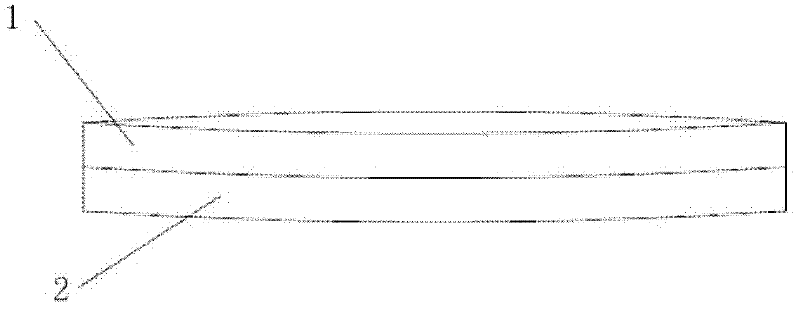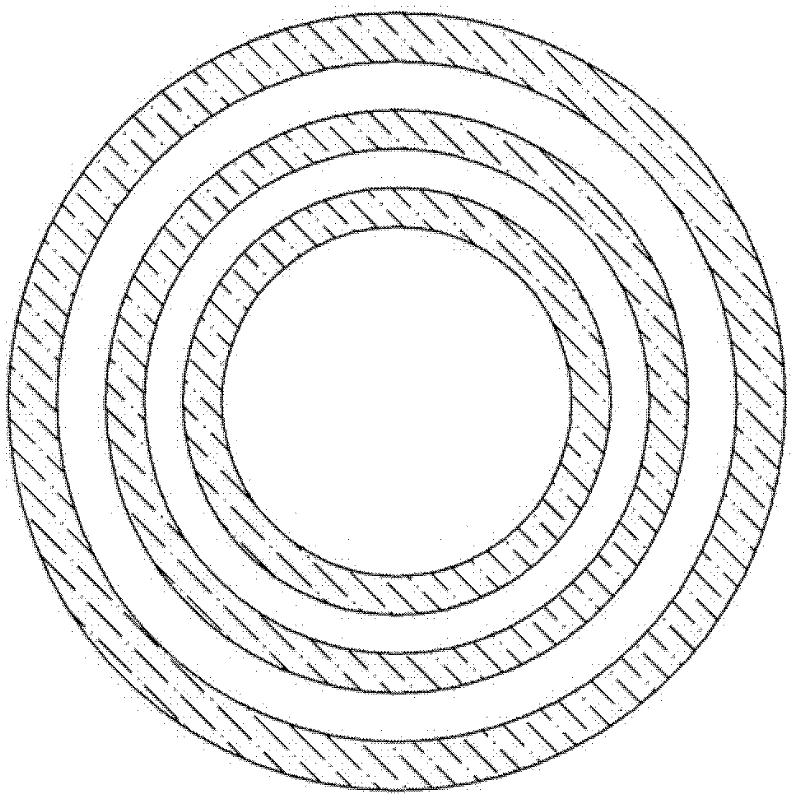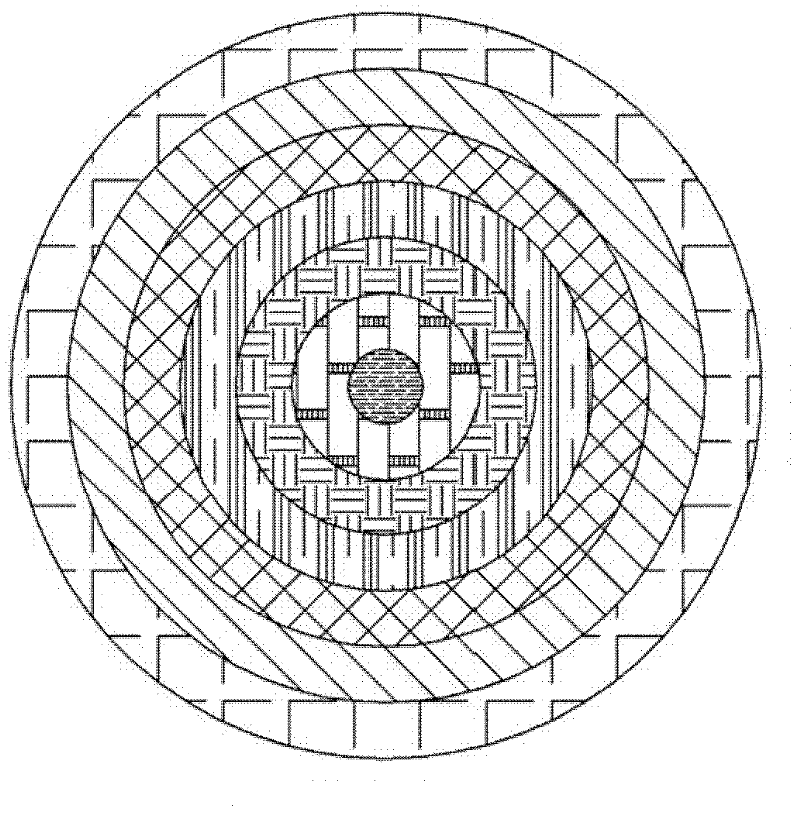Inhomogeneous dielectric substrate made of metamaterials and preparation method for same
A non-homogeneous medium and metamaterial technology, applied in the field of metamaterials, can solve the problem that the dielectric substrate does not have the electromagnetic modulation function, and achieve the effect of expanding functional applications
- Summary
- Abstract
- Description
- Claims
- Application Information
AI Technical Summary
Problems solved by technology
Method used
Image
Examples
preparation example Construction
[0028] A method for preparing a metamaterial heterogeneous dielectric substrate, said preparation method comprising the following steps: a. Immersing a fiber reinforced material in an organic resin glue solution containing a high dielectric constant material, taking it out and curing it to form a prepreg;
[0029] Specifically, the organic resin glue contains a solvent for dissolving the organic resin and a curing agent for curing the organic resin glue, and the organic resin is epoxy resin, brominated epoxy resin or epoxy phenolic resin ; The high dielectric constant material is nanoscale, such as barium titanate, barium strontium titanate or barium strontium tantalate; the fiber reinforced material is glass fiber cloth, paper-based electronic cloth, ceramic-based electronic cloth or Metal-based electronic cloth.
[0030] b. Select different high dielectric constant materials and mix them evenly with organic resin glue, repeat step a to obtain prepregs with different dielectr...
Embodiment 1
[0037] A method for preparing a metamaterial heterogeneous dielectric substrate, the preparation method comprising the following steps:
[0038] Configure epoxy resin glue: Stir and mix dimethylformamide and ethylene glycol methyl ether to make a mixed solvent, add dicyandiamide as a curing agent, stir to dissolve, add epoxy resin, mix and stir evenly to obtain epoxy resin glue;
[0039] a. Fully and uniformly mixing the epoxy resin glue solution and the barium titanate nanoparticles, and preparing three mixed solutions with mass ratios of 1:3, 1:4.5, and 1:6;
[0040] b. Dip three glass fiber cloths into the prepared mixed solutions with mass ratios of 1:3, 1:4.5, and 1:6 respectively, take out and solidify to obtain three prepregs with different dielectric constants;
[0041] Three prepregs with different dielectric constants are designed as rings of different sizes, such as figure 2 Shown; The shape of the prepreg can also be designed into any desired shape according to ...
Embodiment 2
[0044] Embodiment 2: The difference between Embodiment 2 and Embodiment 1 is that the components of the mixed solution prepared are different, so that the dielectric constant of the prepreg obtained is also different;
[0045] Configure epoxy resin glue: Stir and mix dimethylformamide and ethylene glycol methyl ether to make a mixed solvent, add dicyandiamide as a curing agent, stir to dissolve, add epoxy resin, mix and stir evenly to obtain epoxy resin glue;
[0046] a. Fully mix barium titanate, barium strontium titanate and barium strontium tantalate nanoparticles with three parts of prepared epoxy resin glue, respectively, to make three mixed solutions of M, N and P with different components;
[0047] b. Dip three glass fiber cloths into the prepared three mixed solutions of M, N and P respectively, take out and solidify to obtain three prepregs with different dielectric constants;
[0048] The three prepregs with different dielectric constants are designed into zigzag sh...
PUM
 Login to View More
Login to View More Abstract
Description
Claims
Application Information
 Login to View More
Login to View More - R&D
- Intellectual Property
- Life Sciences
- Materials
- Tech Scout
- Unparalleled Data Quality
- Higher Quality Content
- 60% Fewer Hallucinations
Browse by: Latest US Patents, China's latest patents, Technical Efficacy Thesaurus, Application Domain, Technology Topic, Popular Technical Reports.
© 2025 PatSnap. All rights reserved.Legal|Privacy policy|Modern Slavery Act Transparency Statement|Sitemap|About US| Contact US: help@patsnap.com



